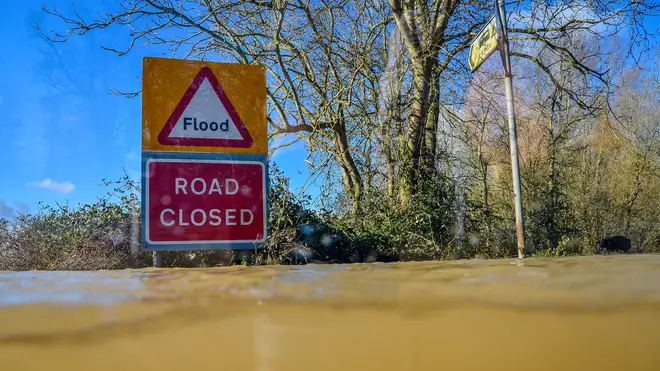
Paul Brand 7am - 10am
24 May 2022, 16:24

There could be a reduction in access to lending and insurance for those sectors most exposed to physical risks, the Bank of England said.
Some households, such as those in flood-prone areas, could struggle to access affordable loans and insurance if there is an absence of action to tackle climate change, a Bank of England report has suggested.
Households and businesses which are vulnerable to physical risks could be particularly hard hit in a scenario where no additional measures are taken, the Bank said.
The findings were part of the Bank’s first biennial test on how banks and insurers will cope with the transition to a net-zero emissions economy.
The test ran several different scenarios, depending on how well the world reacts to limit climate change, including a no-additional-action scenario which could happen if governments around the world fail to enact policy responses.
Each scenario is assumed to take place over a period of 30 years.
The Bank said some responses, to the no-additional-action scenario in particular, “implied a material reduction in access to lending and insurance for sectors and households which were most exposed to physical risks”.
It said: “In the NAA (no additional action) scenario, banks would reduce lending to properties facing greater physical risks, and insurers would substantially increase the premiums they charge to insure against such risks, making insurance coverage unaffordable for many of these households.”
Insurers noted that UK household flood insurance coverage could fall sharply in such a scenario, particularly as insurance on some properties would become unaffordable once the Flood Re scheme – an initiative which helps households access affordable cover – ends as per current legislation in 2039, the Bank said.
In an NAA scenario, responses indicated around 7% of UK households currently covered could be forced to go without insurance because their properties become uninsurable or because they cannot afford insurance at the prices offered.
The Bank emphasised that the scenarios are not forecasts of the most likely future outcomes but “plausible representations of what might happen” based on different future paths.
The NAA scenario is “deliberately severe”, with a rise in the frequency and severity of extreme weather events, it said.
UK banks and insurers are making good progress in some aspects of their climate risk management, and the exercise has spurred on their efforts, the Bank said.
Charlotte Clark, director of regulation at the Association of British Insurers (ABI), said: “We welcome the publication of the Bank of England’s results from its flagship Climate Biennial Exploratory Scenario (CBES) exercise, which participating insurers have invested significant time and resource into.
“The CBES results underscore the need for regulators, Government, and financial services to work together with all sectors of the real economy to ensure that credible, realistic and governable transition plans are set out to underpin a UK-wide transition to a net-zero economy. These results demonstrate that failing to take action will be disastrous for the economy and ultimately consumers.
“Our members are committed to learning from the CBES results, and to building on the significant progress made in the past few years on their climate risk management capabilities and developing long-term transition plans.”
She said the ABI continues to call for investment in protecting society from the effects of climate change, “specifically to invest in building and maintaining flood defences, and the exercise underlines how crucial that will be”.